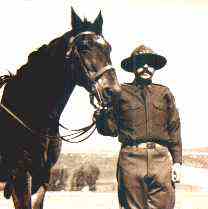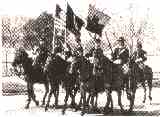|
From Privates to the First Sergeant,
these men recreate the colorful spectacle of the
American Horse Soldier. They demonstrate
their horsemanship for school groups and perform at parades, re-enactments, official ceremonies on post.
Reflecting this heritage and commitment, the Commanding General's Mounted Color Guard lives up to a description of
mounted troops written after the Civil War:
"The cavalry is the hardest branch there is
in the service. A cavalryman is kept busy
all day long."
Uniforms
Like most cavalryman of the American Civil War, the Color Guard wear the 1854 pattern uniform jacket. Trimmed in yellow - the cavalry branch color -
this wool/cotton uniform provides degrees of warmth as well as coolness. While in camp or garrison, the sack coat and muslin shirts were the common attire.
The trousers are kersey blue in color and are reinforced in the seat to extend wear. The wider the yellow stripe,
the higher the enlisted rank. Officers trousers have only an 1/8 inch welt of yellow cord down the outside seam.
Headgear includes a forage cap, copied from a style popular in the French Army. Slouch hats, or campaign hats, are occasionally worn by enlisted men but do
not have yellow hat cords.
Boots and brogans, or short ankle boots, are the standard issuance for footwear.
Weapons
The Civil War cavalryman used a variety of weapons. Handguns included the 1858 Remington New-Model Revolver
and Colt Army Model 1860 - both .44 caliber; and the Colt Navy Model 1851 which was a .36 caliber weapon. The
Model 1863 Sharps Carbine was one of the more popular firearms carried by the cavalry, although like the side arms, numerous types of shoulder arms were used.
The cavalryman might also carry a saber. The Model 1861 Light Cavalry Saber was the standard pattern issued. However, the saber was a cumbersome piece of equipment, rarely needed in the field and often left back in camp. Nevertheless, the saber gave the horse soldier another
weapon in his arsenal - if the situation required.
Saddle
The standard saddle used was the 1859 pattern McClellan. Captain George B. McClellan developed the saddle's design as a result of his travels on the frontier, in Mexico and Europe in the 1850s. A distinctive feature of the saddle was the rawhide seat which was adopted as an
economy measure. The McClellan saddle, which weighs approximately eighteen pounds, was designed for the comfort of the horse. This saddle, with certain modifications, continued to be used by the Cavalry until World War II.
Stable
The Mounted Color Guard Stable is housed in the last cavalry training stable building which still has a cobblestone floor. This building was built in 1889 with a capacity for seventy-six horses. Rooms were set aside for the Stable Sergeant and Tack Room. Today, the building is home to the Mounted Color and is staffed by a First Sergeant and special duty soldiers from
units assigned to Fort Riley.
|
1SG Mark Atwood and Riley
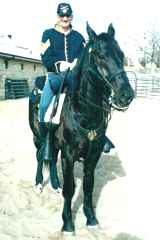
Chief-III
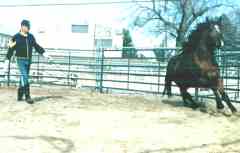
PFC Gabriel Tervino & Trooper
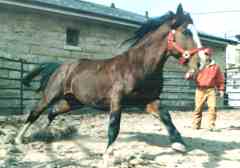
Play Time
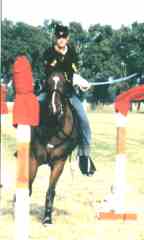
Introducing the Jumps
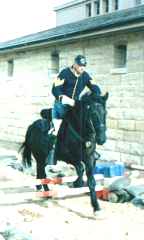
New arrival- Ranger
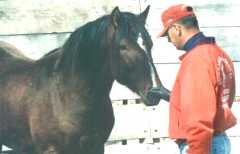
|







